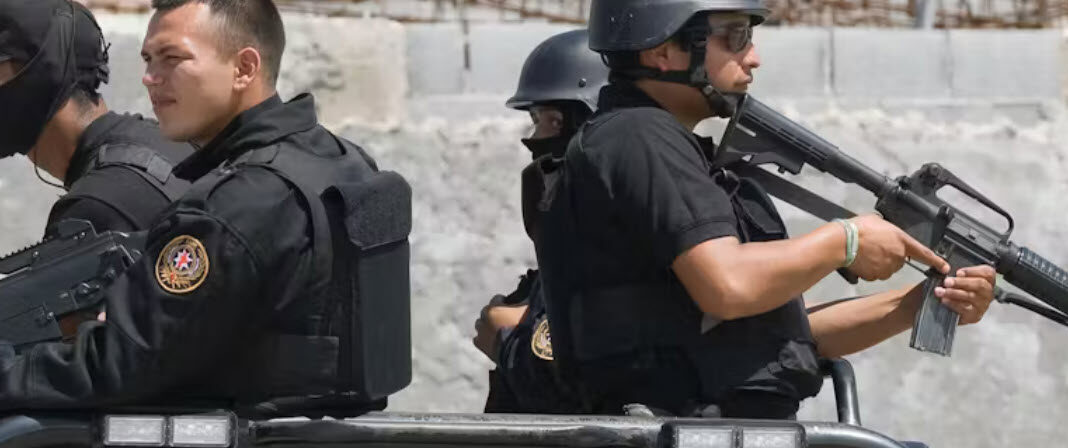Deep-seated inequality is fuelling an escalation of violence across Latin America
For most of the 20th century, Latin America was portrayed as one of the world’s most peaceful regions. Coups and repressive military regimes had long been commonplace but widespread civil disorder and war were relatively rare. Today, however, the world’s media is slowly waking up to a very different reality.
Surging levels of violence now mean that mortality rates in Latin America often exceed those seen in the world’s conflict areas. In 2021, Latin America had the highest murder rate in the world at almost three times the global regional average.
Ecuador is one country that has seen a particularly massive spike in violence in recent years. Masked gunmen stormed a live news broadcast on January 9 and the prosecutor investigating the attack was murdered just days later.
The explosion of violence in the region is being caused by a number of mutually reinforcing factors. Notably, deep-rooted inequalities and a weak state have allowed a destabilising narcotics economy to flourish.
Forever unequal
Latin America has long been the most unequal area of the world in terms of income and wealth. But this inequality has worsened over recent decades. In 2021, Brazil’s wealthiest 1% owned 47% of the country’s wealth, up from 45% in 2006. The increase was even greater for the top 0.01%, with their wealth share rising from 12% to 18%.
Unlike other middle-income areas, the economic structure of the region is still based on exporting primary products – something that has remained largely unchanged since colonial times. This dependence has deepened as Latin America feeds the growing demand from China for its minerals and foodstuffs.
Relying on the export of primary products has reinforced inequality because the expansion of large-scale commercial farming and mining has blocked moves towards agrarian reform.
As a result, there has been a surge in the migration of school-leavers to urban areas in search of work. However, by anchoring this highly capital-intensive economic model, any serious attempt at industrialisation and labour-intensive job creation – akin to what has taken place in much of south and south-east Asia – has been stymied.
The long history of anti-communism promoted by successive US administrations during and after the cold war, coupled with a Catholic church that has become deeply conservative in recent decades, has also hindered attempts at social democratic reform and inclusive development. This has seen the collapse of revolutionary movements with a progressive agenda capable of bringing about the structural reforms the region so desperately needs.
Consequently, underemployment is rife – a major factor propelling soaring illegal immigration to the US. Over half of workers in Latin America are employed informally with job instability, low income and no social protection.
The illegal drug trade
But a new factor – the narcotics industry – has emerged in recent decades with a deadly impact. Colombia is now the world’s largest producer of cocaine and Mexico is fast becoming a global producer of heroin and fentanyl.
The emergence of narcotics has built on and reinforced the deep-rooted inequality that affects the region. Young and underemployed migrants to urban areas provide the foot soldiers for the growth of extremely powerful narcotics gangs. The Primeiro Comando da Capital in Brazil is now one of the largest gangs in the world with over 30,000 members and a growing global reach.
Narcotics gangs now exist in every Latin American country and are driving homicide trends across the region. They seek to co-opt and corrupt rather than challenge the power of the state. But this is likely to change.
International development organisations that operate in the region have long been lamenting its “institutional fragility” and the falling level of citizen trust. They call for governance reforms, but nothing fundamental ever changes.
A main reason for this dismal governance is inequality – a bloated public administration characterised by “clientelism” (the practice of choosing or promoting people in return for political support).
But the flip side is the virtual absence of a professional ethic and collective memory inside the civil service. Public sector corruption thus remains endemic within the government, police, armed forces and prison system.

Failing states
The most striking feature of the weak governance encouraging this gradual slide towards failed states is now rampant corruption from top to bottom of the judicial system, thanks to the infiltration of drug gangs. Personal insecurity has become the daily norm for the urban poor and the rule of law simply does not exist for most citizens.
When a poor person is killed – whether by state repression, settling of scores among narcos, street robbery or extortion – no criminal investigation usually takes place unless relatives have the resources to hire a lawyer. The crime prosecution rate is minimal and the vast majority of inmates in overcrowded prisons are poor people awaiting trial.
As a result, the capacity of the state to counter the gradual spread of narcotics is extremely limited. This vulnerability has already produced the first example of a narco state – Honduras under the presidency of Juan Orlando Hernández (2014–2022). On leaving office in April 2022, Hernández was extradited to the US to face charges of drug trafficking and money laundering.
The Latin American elite try to justify the current economic model as providing food security and mineral resources for the growing world population. Yet the elite remain in denial about the violent consequences of this model.
There is a risk that Latin America’s very role as a bread basket will convert it into a basket case of perpetual civil disorder.
Andrew Nickson, Honorary Reader in the Department of International Development, University of Birmingham, has been a regular contributor to LAB for many years, notably writing about Paraguay.
Main image: Keith Dannemiller / Alamy Stock Photo
This article is republished from The Conversation under a Creative Commons license. Read the original article.

